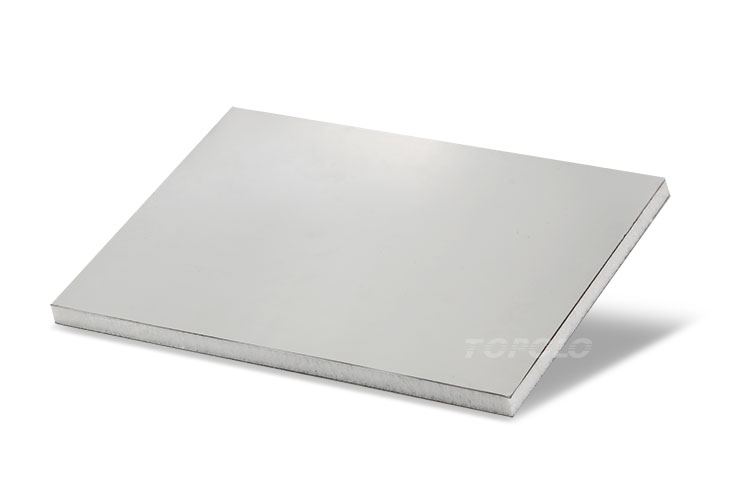
CFRT Skin PET Foam Sandwich Panels
Home » Materials » Foam Sandwich Panels » PET Foam Sandwich Panels
Recyclable lightweight composite panels
- Lightweight
- Durable
- Waterproof
- Recyclable
New Thermoplastic Composite Sandwich Panels
Continuous fiber reinforced thermoplastic composite (CFRT) and PET (polyethylene terephthalate) are combined to form a new sandwich panel with superior performance. This sandwich panel has many characteristics such as light weight, strong, durable and waterproof. Both PET core and CFRT skin are recyclable materials and can be recycled many times. The large-scale application of PET foam thermoplastic sandwich panels has achieved economic growth and is beneficial to environmental protection.



Specifications
Schematic Diagram

Details

PET Foam Core
PET foam not only has excellent mechanical properties but also has environmental protection properties. We provide both virgin and recycled PET foam cores depending on application requirements.
- Density: 60-300kg/m³.
- Compression strength: 0.85-5.20MPa.
- Compression modulus: 73-235MPa.
- Tensile strength: 1.40-4.00MPa.
- Tensile modulus: 90-275MPa.
- Shear Strength: 0.55-2.05MPa.
- Shear modulus: 13.5-70.0 MPa.
- Roller peeling: 20mm.N/m.

CFRT Facing
Continuous fibers are combined with thermoplastic resins to create durable, lightweight and durable UD prepreg tapes, which are then thermal laminated together at set angles to form CFRT sheets with improved performance. CFRT laminates are known for their excellent mechanical properties, including high strength-to-weight ratio, good impact resistance, and resistance to environmental factors such as moisture and chemicals.
- Composition: 2-3 layers of thermoplastic unidirectional tape.
- Glass fiber content: 60-70%.
- Fiber type: Continuous glass fiber.
- Resin type: Thermoplastic polypropylene resin.
- Thickness: 0.7-2.0mm.
- Surface treatment (optional): Polymer film (glossy/matte).
Different surface effects

- Features: Natural-colored CFRT sheet, no protective film, and a relatively rough surface.
- Application: Flooring substrate.

- Features: Natural-colored CFRT sheet, covered with a polyester protective film for a smooth, flat surface.
- Applications: Wall panels, roof panels, and partitions.

- Features: Black CFRT sheet (with added carbon black) with a polyester protective film. The surface is smooth and bright, but the color is relatively dull.
- Applications: Wall panels, roof panels, partitions, etc.

- Features: Black CFRT sheet (with added carbon black) with a non-slip surface treatment.
- Application: Flooring.
Application on vehicle body

- Dry cargo truck and trailer bodies
Weight reduction allows for reduced fuel and electricity consumption, longer driving range, and greater commercial value for businesses and individuals.

- Camping RV bodies
Lighter and thinner PET foam sandwich panels allow for more interior space in camper bodies, allowing RVs to reach more distant destinations.
Thermoplastic Composite Technology Improves Performance and Reduces Costs

CFRT Facing VS FRP/GRP Facing
☑ Stronger
- CFRT is impact-resistant and not easily broken.
☑ Lighter
- CFRT can be thinner, lighter and stronger.
☑ Affordable
- The price of CFRT materials is much lower than that of thermosetting FRP.
Production and Processing












